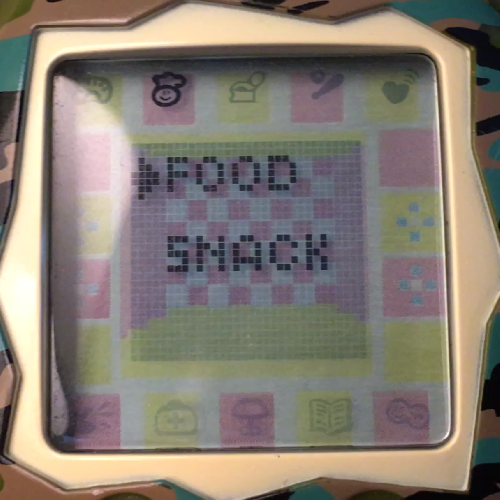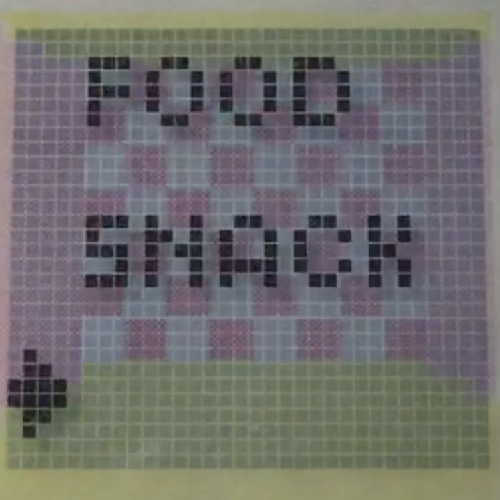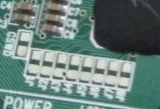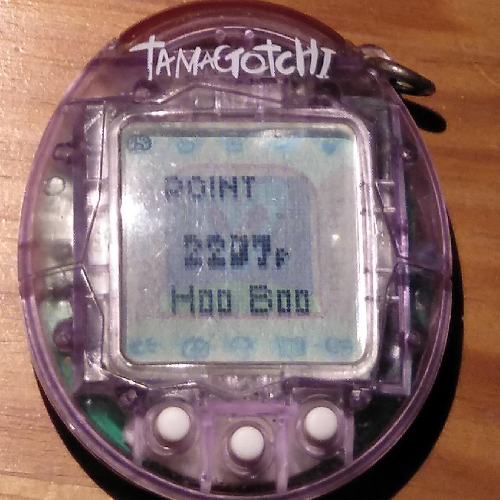Hello

So, one of the discoveries I'm about to talk about is - and I don't think I'm exaggerating here - one of the most bizarre and significant discoveries that I think we've made in years. Not only does it present new features we've never seen before, but it throws a lot of what we already know into question. And, by some sort of cosmic coincidence, just a few weeks later one of the features of the discovery was found elsewhere using a completely independent method.
While the discovery itself was made in the field of battery glitches, it also uncovered some interesting quirks unrelated to glitches, and entirely related to the Tamagotchi hardware.
So, let's talk about a couple of features of the early Connection models you've probably never heard of before:
"Hybrid Mode" and the
Care Miss Counter.
== Part 1 - A review of Tamagotchi's debug features ==
There are three fairly well-known debugging features on the Connection series devices - debug mode, ROM testing and region changing.
Debug Mode
Perhaps the most well-known debug feature is the aptly named debug mode. American devices - particularly versions 1-3 - have a "JP3 DEBUG" jumper on their boards, allowing the feature to be accessed. It's often said that European devices don't contain the same functionality, but we'll assess this claim shortly.
The feature enables hyperspeed mode and a character select. It also disables the ability to enter the ROM test mode, for some reason.
ROM Testing
The test mode is a feature available on pretty much every Tamagotchi device, and what you can do in the test mode differs from version to version. It's often called the ROM test, but this is really only one part of the test. On the Connection devices, the feature includes the ability to check the screen is working, identify the ROM version number of the device, test the ROM and also check the infrared is working as intended.
Region Changing
A slightly more obscure and frankly somewhat bizarre feature, by shorting either the "JP1" or "JP2" jumpers on a US board, the version of the device will switch to a comparable European version. On later versions this mostly means changing the date format, but for the V1, the changes are more widespread.
Even stranger is that region changing a V1 VER 4.2 turns it into VER 3.0 00001, an unreleased European Deka version.
== Part 2 - What does Region Changing do? ==
The region change feature does pose an interesting question about how Tamagotchis work. In particular, why would two versions be included on the same device? What's the point? What would that even be used for in testing? And
why is one of them a Deka version?!
There's two possible explanations for what the region change does - I call them the "Single ROM" and "Double ROM" hypotheses.
The Double ROM Hypothesis
This hypothesis states that there are two separate "ROMs" contained within the Tamagotchi's ROM. That is, there are two separate sets of data, and which one is used depends on whether the region change is enabled or not. The main piece of evidence supporting this is the V1 versions - each of the region changed versions seem so different to the base version (especially the unused Deka version?) which would suggest that it's more than just switching a couple lines of code or a single sprite. But then again, perhaps the V1 does it differently to other devices.
The Single ROM Hypothesis
This hypothesis essentially state that a region changed version is fundamentally the same version as the base version, and that the only thing that changes is that a few lines of code or a few sprites are switched out. You can sort of think about the code and the data being one big pool, and ordinarily only a section of that pool is used - when the region change is enabled, like the other debugging features, it would just change which part of the pool is being used. Logistically, this hypothesis makes the most sense, as they'd only need to produce one ROM version, which would universally be used on all devices - then which version is used would just require a minor hardware change. This would also explain why US boards have the region change feature at all - it may be present on European devices but already enabled by default, e.g. with soldering.
This latter hypothesis also has some interesting consequences. Could Spanish-language versions also contain additional ROM versions? Might there be other ROM versions that aren't available to us via modifying the hardware that our devices have? Could every European device contain an unused US version which never gets seen as a result of the hardware? Would that mean that versions for which only the European counterpart has been observed also contain information on unseen US versions?
== Part 3 - A New Discovery ==
In the Tamagotchi Collectors Discord, I was talking with Razerek about battery glitches, and they decided to give them a go. Quite quickly they encountered something very unique:
The European V1 food menu... but on an American V2.
It's not the first time that menus from one version have been discovered on a later version via the glitches. In fact, the V2 games menu has been accessed using battery glitches on a V3 - and the slot game works perfectly. But this was different - it wasn't a random fluke that put us into an unused menu, it was
consistently showing this menu instead of the V2 one.
The glitch quickly went away, but after some more experimentation we got it to re-appear, and this time it stuck for much longer. Experimentation with the menu revealed that it worked identically to how it does on the V2, even down to there being an invisible "TREAT" option beneath the two options that were shown.
Other menus were affected too. The status menu used some of the weird quirks that European V1s had, and on top of this the discipline, friends and sound menus all use their V1 connexion variants.
(The generation number is pretty glitchy weird-looking here, but this is just a result of the battery glitches!)
Even weirder, the Tamagotchi cannot be paused in this mode, and the angel sprite retains the little halo it had on the Connexion V1. I wouldn't be surprised if some of the other Connexion quirks were present too, like the weird connection gifts. On top of all that, the shop permanently features four balls and nothing else, as though the shop feature just stops working entirely!
It started to look as though this was the result of region changing the V2 but using the slightly more extreme region changing measures that the V1s used. As a result, we decided to name it "Hybrid Mode", being a sort of hybrid of the V1 and the V2. Perhaps this functionality isn't even intended, but a weird leftover of sorts. Could this mode have a new ROM version?
Well, unfortunately, the effect disappears upon resetting the device, so there's no hope for finding out that information just yet, unless there's a more permanent way to enable it.
There's actually one more feature of this glitch being enabled that I've not mentioned just yet. Whether this is something fundamental to hybrid mode or just something incidental that popped up at the same time, perhaps due to the chaotic way the mode is enabled, is unclear at this point in time.
The points screen contains two counters at the bottom, one labelled as "H" and the other as "B". At first it seemed like perhaps it was an odd graphical glitch, since that's not an uncommon trait of the battery glitches. However, the counters would always be present when the hybrid mode is activated, meaning it was potentially some previously unseen debugging functionality. But what could these counters even mean?
Notably, they were a little bit different each time the hybrid mode was activated. I pointed out that they could represent the Tamagotchi's care misses, since the V1 patent document described the two levels of care miss that are apparently present on the device - though I wasn't sure what "H" and "B" were supposed to stand for. If this were the case it would become potentially extremely useful in determining the way the growth works on the V2.
== Part 4 - Investigation ==
The inconsistency of the glitch was the number one thing holding back research into this phenomenon, but after some experimentation Razerek discovered that slipping the battery in and out at the same time as the "DOWNLOAD" option is pressed seemed to relatively consistently trigger the glitches (though I never managed to figure it out, personally).
Since the prevailing hypothesis was that the points screen was showing a care miss counter, the next thing to do was to confirm it. We turned on hyperspeed mode and watched the counter tick up in line with the care misses - just as we expected, the care misses aligned with what was written in the patent document - supposedly, H for "heart", and B for "body". Further research confirmed that winning a round of Jump or Bump also decreases the B or H counters by one, respectively.
The need to activate the glitch via a very inconsistent method was still an issue, of course. There could be a lot more we can learn about hybrid mode and the care miss counter which we just can't access due to the difficulty and inherently temporary nature of the approach we took to activate. We needed something more reliable.
A few days later, SA311 brought to our attention an unusual V2 he had. He'd bought it fresh from an unopened box, so it couldn't have been tampered - it was 100% legitimate, but unlike anything we'd ever seen before. A European Tamagotchi V2 using an American firmware version, "A.2".
The hardware looked like a European board, too, and certainly not a US board - so how did this even happen? Was there some freak accident that caused a bunch of devices to be given the wrong version?
While looking at the board, SA311 noticed that the front of the board had a bunch of unused jumpers.
There's not really any documentation on these jumpers. What happens if they're used? Say, for example, J8. What happens if we short that jumper?
The miss counter is enabled. Permanently. Or, at least, for as long as the jumper is shorted for. Only the miss counter though - hybrid mode was not enabled by the jumper.
So, this entire time, European V2s have had this feature readily available to us, in a fashion almost identical to the way the debug mode works, but apparently nobody ever noticed! Speaking of which, the debug mode can't be accessed on European devices, right?
Well, as it turns out, the CSWD jumper enables it here, too. Not sure if it only works because the device is running an American version, though. Oh, also, the region?
That can be changed too - J1 is the region change jumper. If we compare with a standard European V2 board...
On a standard board, the J1 jumper is already shorted! I feel like the only explanation is that every
European device also contains the US firmware, just like is the case for the American devices - the J1 jumper is supposed to be shorted to change the region, but evidently this particular device somehow got released without having its region changed, resulting in the American version being used! This also feels like strong evidence in favour of the "Single ROM Hypothesis", too, if you ask me.
Funnily enough, this actually isn't the first time that a device has popped up with a strange configuration of firmware and hardware. In 2019, rjalda100 found a US V1 with a US shell running the US version VER 4.1 - but the hardware was inexplicably different to all other US devices we'd seen up until that point. In fact, it used the same board and screen icons as the European V2s used. We've hypothesised that it could be an early South American device from before the Spanish-language localisation (since these versions also use similar hardware to the European devices, and have a very small difference in the printing of the logo on the shell, too, which we observed on this shell as well). It does pose the question of what the other jumpers would do on the V1, though, doesn't it?
== Part 5 - What's next? ==
If this experimentation highlights anything at all, it's that there's still so many things to learn about the Connection-era Tamagotchis, and a lot of their interesting and unique quirks may be hiding in plain sight. For one, the care miss counter jumper was apparently present the entire time on the majority of Connexion V2 boards, and we've confirmed that it really does activate the care miss counter consistently on other devices:
Evidently, there's still a long way to go in terms of understanding Tamagotchi hardware. As a result I've decided to finally begin documenting all of the different circuit boards used by Tamagotchis, in an effort to identify the full potential that might be hiding in these boards. Who knows, maybe even the hybrid mode can be activated with consistency and permanence using a hardware method.
If any of you would like to help out
(and you're experienced with taking apart Tamagotchis already!!) then it'd really help me if you could take good quality photos of a device's board - both sides, ideally - along with some details about the device:
- The region of the device, e.g. US / Europe / Australia etc, and ideally the country of origin too in case some countries received some slightly different hardware,
- Which shell design it uses,
- The ROM version of the device,
- The manufacture code of the device (the number printed on the battery door),
- And if relevant, any other details?
(You won't need to take the entire board out like in the images above though, of course - you can just take a photo of the board whilst it's still in the shell).
I'm focusing on the connection-era devices at the moment, and probably only pre-V7 stuff - though I'll include the Japanese devices in that, too. Any help would be appreciated, though I'd really recommend only doing this stuff if you've taken apart Tamagotchis before, e.g. for activating the debug mode or performing hardware maintenance.
== Part 6 - Any other glitch updates? ==
Oh, just a brief additional update - my V2 decided to give me a glitch jackpot and I received about 50 glitch items. I'm going through each one individually and logging their effects, which I may make an update on soon - it also provided helpful in identifying the IDs of a few more of the V2 items. Battery glitches continue to teach us more obscure Tamagotchi knowledge!
















